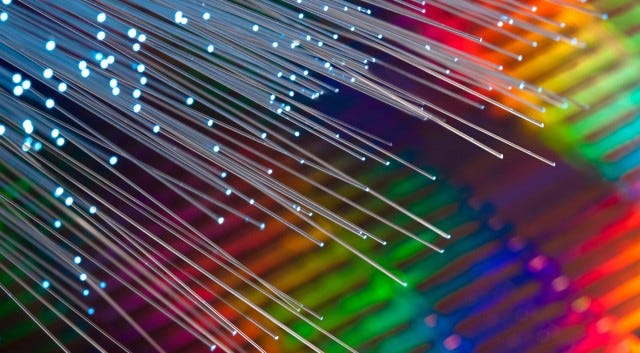# Revolutionary Hybrid Optical CPUs: A Breakthrough in Chip Design
Written on
Hybrid Optical Computing: The Future of Chip Design
Recent research has unveiled a promising approach to integrating optical interconnects directly at the chip level. If this method proves effective, it could lead to substantial advancements in performance while also reducing power consumption.
The Advantages of Light-Based Computing
Light-based computing offers numerous inherent advantages, with speed being the most notable. The theoretical switching speed of an optical transistor, when activated by another optical transistor, is measured in femtoseconds (10^-15 seconds), in stark contrast to the much slower nanoseconds (10^-9 seconds) typical of current technologies.
However, utilizing light for switching poses challenges, particularly regarding power efficiency, as it tends to perform optimally over longer distances. Creating hybrid devices that merge optics and electronics—where electronics manage signaling and light transmits information—has proven complex due to significant differences in scale and energy losses during the conversion between light and electricity.

Overcoming the Scaling Challenges
The research team has developed a new kind of efficient photonic crystal, enabling them to construct devices capable of both electrical-to-optical and optical-to-electrical conversions. They successfully built an electro-optical modulator that can transmit data at 40 Gb/s and a photoreceiver operating at 10 Gb/s, achieving a power consumption of just 42 attojoules per bit.
These advancements suggest that hybrid optical and electrical systems might be incorporated into future devices, facilitating interconnects between chips. This could be particularly useful for maintaining cache coherence in multi-core CPUs. However, leveraging this technology would necessitate larger chip designs, as the optical components cannot be miniaturized to the same extent as traditional logic transistors.
The Limitations of Current Technology
The feasibility of creating a full-scale chip using this technology remains limited; for instance, a Core i7 built with existing optical technology would occupy an area of 48m², exceeding the dimensions of the standard ATX form factor. Nonetheless, the notion that increasing component size could enhance performance is not without merit.
As Moore’s law regarding transistor density approaches its limits and Dennard scaling has faded, the potential for improved power efficiency and performance through optical interconnects may surpass any gains achievable from smaller process nodes. This is especially relevant, considering that this technology is still years away from widespread application, and we will likely exceed the 5nm process by the time practical solutions emerge.
Exploring the Future of Optical Computing
For further insights on the current state of optical computing and its future potential, check out the accompanying video.
Now Read: Insights into Light-Based Computing and its Challenges
- Why light-based computing has yet to become mainstream
- IBM's advancements in on-package silicon photonics
- DARPA's innovative laser scanning technology: Manipulating light with microchips